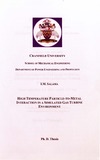JavaScript is disabled for your browser. Some features of this site may not work without it.
| dc.contributor.advisor | Elder, R. L. | |
| dc.contributor.advisor | Tan, S. C. | |
| dc.contributor.author | Salama, I. M. | |
| dc.date.accessioned | 2010-10-15T14:09:51Z | |
| dc.date.available | 2010-10-15T14:09:51Z | |
| dc.date.issued | 2002-05 | |
| dc.identifier.uri | http://dspace.lib.cranfield.ac.uk/handle/1826/4610 | |
| dc.description.abstract | An experimental study of the particle-to-metal interaction during high temperatures and velocity impact conditions is presented. A novel continuous erosion testing facility have been used to study the effect of particle and metal target temperatures as well as impact particle velocity on the erosion/deposition behaviour of the stainless steel 321, Nimonic 75, and aluminium target materials. The study was carried out to provide database information on the behaviour of those metals under simulated gas turbine conditions. The erosive particles used were quartz sand with diameters ranging from 20-30 μm. The erosion characteristics of stainless steel 321 were recorded at target surface temperature of 285°C, 415°C, 570°C and 715°C. The tests were carried out at two different impingement angles of 30° and 60° and at particle impact velocities of up to 300m/s. The effects of particle temperatures of 550°C, 750°C and 950°C on erosion/deposition rates were examined. The Nimonic 75 target temperatures were slightly modified to give a similar surface to melting point ratio as the stainless steel. The Nimonic 75 was tested at 545°C, 685°C, 825°C and 965°C surface temperatures and at the same particle velocities and temperature used for the stainless steel tests. The Nimonic targets were only tested at one impact angle of 30°. The aluminium targets were only tested at an impact angle of 60° and particle impact velocity of 100 m/s. The surface temperature was modified to give a ratio up to 0.8 of the melting point temperature, where the particle temperature was set to be 350°C, 550°C and 750°C. It was found that particle and target temperatures, impact velocity and angle have a significant effect on the erosion/deposition characteristics. There is a threshold target and particle temperature for which deposition begins, and it depends on impact velocity and angle. The Nimonic 75 targets exhibit a better resistance to particle deposition over the stainless steel 321 at high impact velocity and temperatures. Simple models of the erosion/deposition were established to describe the conditions of particle deposition on the stainless steel and Nimonic targets. The aluminium targets show an increase in the erosion rate as target temperature reaches certain level, which then drops as target temperature continues to increase beyond this point. | en_UK |
| dc.language.iso | en | en_UK |
| dc.publisher | Cranfield University | en_UK |
| dc.title | High temperature particle -to-metal interaction in a simulated gas turbine environment | en_UK |
| dc.type | Thesis or dissertation | en_UK |
| dc.type.qualificationlevel | Doctoral | en_UK |
| dc.type.qualificationname | PhD | en_UK |
